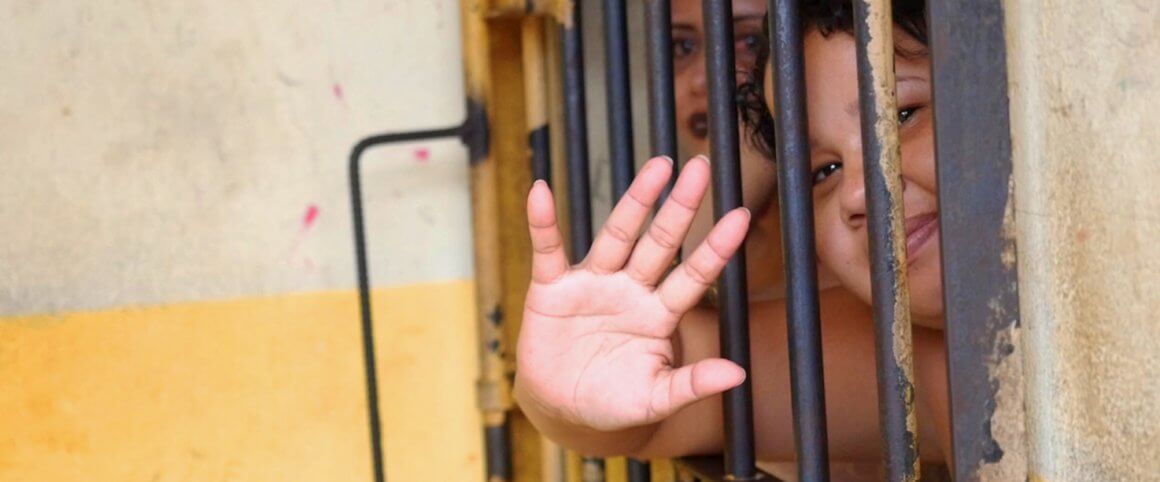Work cooperatives help female prisoners to resocialize
Specialists say these projects should be multiplied to decrease recidivism and help women leave the drug trade
Article originally published in the Folha de São Paulo newspaper on October 20, 2020.
Still small and without state support, labor cooperatives formed by incarcerated women speed up the resocialization process. Inmates learn the craft, set up a business, find buyers and share the profit.
The cooperative is not only a source of income, but a ticket to resocialization. When they leave prison, they can continue on the project or sell individually.
Since 2014, this is the experience of inmates at the Ananindeua Women’s Reeducation Center (CRF), in Belém, Pará, home of the Social Cooperative of Female Entrepreneurial Art Work (Coostafe). In the project conceived by former CRF director, Carmen Botelho, women produce handicrafts and clothes.
A similar initiative was replicated at the Second Women’s Penitentiary in Tremembé, São Paulo, with the creation of the Lili Cooperative in 2018. The project, however, was banned in the penitentiary in May 2019.
Although cooperative members associated with Lili remain in prison — about 33 –, they are no longer able to access the work activities, which continues on the outside with 16 former Tremembé inmates.
Cooperative projects are also being developed in Maranhão, Paraíba and Rio Grande do Norte.
“It is an emancipatory business model”, sums up Patrícia Villela Marino, president of the Humanitas360 Institute, an NGO that has helped to structure cooperatives in partnership with the National Justice Council (CNJ).
The subject was debated on Monday (19) at the Female Incarceration seminar held by Folha with support from Humanitas360 to release “Tecendo a Liberdade” (weaving freedom), a documentary on these cooperatives.
If strengthened and multiplied across the territory, these initiatives could fill a vacuum in the application of Brazilian legislation.
Although the Law of Penal Execution provides prisoners with the right to paid work, data from Infopen (statistical information from the prison system) shows that, in 2017, only 33% of the female prison population was involved in any work activity. Of the working portion, 38% did not receive any payment.
Based on the professional qualification provided in the cooperatives, the debaters affirm that it is possible to reduce criminal recidivism and strengthen sources of income beyond the drug trade — which is responsible for 60% of female arrests each year.
The project is welcome to help deflate an already overcrowded prison system, says lawyer Marina Dias, executive director of IDDD (Institute for Defense of the Right to Defense).
In the past two decades, female incarceration has grown 560% in the country. While in 2000 Brazilian prisons housed around 5,600 inmates, today there are more than 37,000 women deprived of their liberty.
Dias explains that the Drug Law of 2006 does not set objective criteria to differentiate drug dealers from users. The result is massive arrests of those on the ground, drug dealing to survive, and impunity for those who organize the crime chain.
“Most of the prisoners did not occupy high positions in the organized drug dealing scheme,” says the lawyer. Another problem, she adds, is the delay in judging women. About 37% of prisoners in Brazil today are in provisional detention, which means that they have not yet been tried.
“I saw women who had been awaiting trial for over a year and were later acquitted,” says actress and singer Preta Ferreira. “There are cases where the time a woman spends in prison exceeds the sentence she would serve if guilt was proven.”
In 2019, Ferreira, who is an activist for the right to housing, was held preventively for 108 days after a complaint alleged that occupation movements in downtown São Paulo are part of a criminal association.
“The lack of public policies aimed at low-income workers causes the prison population to increase,” says Ferreira.
In addition to the damage to the lives of detainees, says Marina Dias from IDDD, there are those triggered in parenting.
According to Infopen’s data, 74% of imprisoned women are mothers. And there are many cases where children are also in prison. In June 2020, 1,850 children were in prison units with their mothers.
The debaters also underscore the consequences of the so-called fine penalty, which many inmates are forced to pay to justice when they leave prison.
While they do not pay the debt, which value varies from case to case, they are not able to regularize their voter registration and, consequently, issue their employment record book. “It is a perpetuation of the cycle of violence,” says Dias.
In the documentary “Tecendo a Liberdade”, the strings of these problems are attached through statements from former inmates. Director and screenwriter Luiza Matravolgyi says the film’s objective is to weigh in female incarceration and consolidate an alternative to audiovisual productions portraying the theme.
“There are already a lot of productions addressing these problems. Although solutions need to be polished, thinking about possible paths is an important part.” The challenge, she says, was to ensure that the protagonists would be portrayed as workers, and not just as women deprived of their liberty.
The seminar was moderated by Folha’s special reporter Fernanda Mena. The documentary “Tecendo a Liberdade” is available here until October 23.

